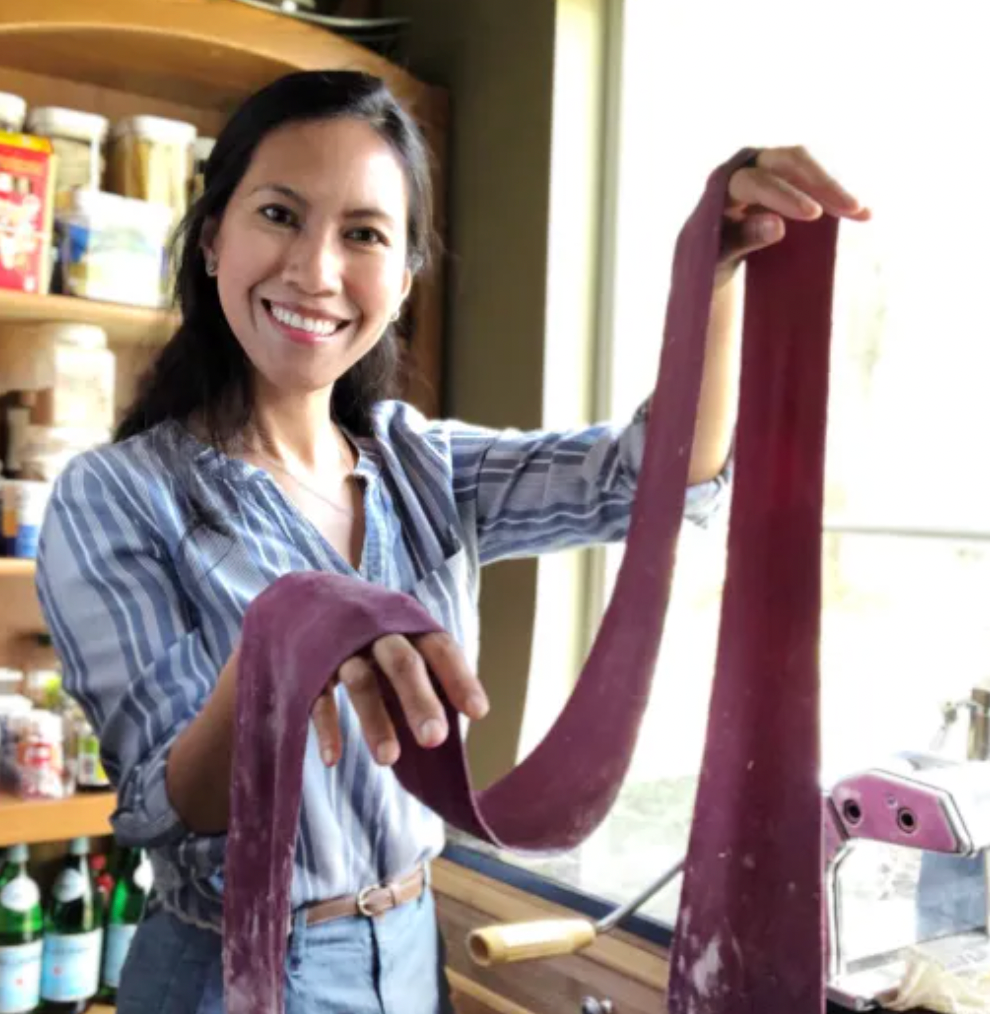Nicole Ponseca's Filipino Friday
Ahoy! We are riding the wave of a Filipino Flag Frenzy rivaled only by the Italian and Pride varietals and maybe the Confederate in the less united of our states. The Philippine flag has become an adornment of adoration for many Filipino-Americans, especially those engaged in what I call The Pinoy Renaissance of the last decade. This period marks a resurgence of pride and self-awareness among Filipinos, juxtaposing the painful legacy of historical segregation and Western idolatry with a newfound, awakened sense of identity and belonging.
Much like America's Stars & Stripes, the Philippine flag, inspired by Uncle Sam, dons the patriotic colors of red, white, and blue, adorned with the Sun & Stars. These elements have transcended their original fabric to become ubiquitous symbols, decorating various knick-knacks widely available for purchase on t-shirts, stickers, stuffed toys, posters, and made to good use on graphics from restaurant logos to condiments. There’s even branding on humans too! Particularly among the Xennials, a subgroup of Gen X and Millennials, these symbols have found a permanent home on forearms, shoulders, and even a tush or two. It seems appropriate that The Internet defines this subgroup of Gen X and Millennials for their entrepreneurial spirit and their desire to “take ownership”. The form of a branded body part messages to all, “I Am a Filipino”, and I claim my belonging to something greater than myself. As I am far too overwhelmed by the permanency of a tattoo, I express my Filipino pride through my businesses and an insatiable desire to learn more about my heritage. Hence, I delve into the history of the flag and share my findings with you.
Mabuhay ang Pilipinas!
Here are some fast facts about the history of the Philippine flag: The Philippine flag has seen two major iterations. The original, designed by General Emilio Aguinaldo in 1897, featured a mythical sun with a face, inspired by the Sun of May from the Argentinian and Uruguayan flags. This sun, with its eight rays, represented the first eight provinces that revolted against Spanish rule. Three five-pointed stars adorned each corner of the white equilateral triangle, symbolizing the three main geographical regions: Luzon, Visayas, and Mindanao. The flag’s colors were rich with meaning: blue for peace and justice, red for patriotism and valor, and the white triangle for equality. This early flag was not only a symbol of rebellion but also a piece of visual rhetoric, meticulously crafted to inspire and unify the Filipino people. During this time, capturing or surrendering a flag in battle was a powerful symbol of success or defeat.
In 1936, under President Manuel L. Quezon, the Philippine flag underwent significant redesign to better reflect the modern vision of the nation. This redesign effort was part of a broader movement to standardize and unify national symbols. The face on the sun, originally part of the flag's design, was removed, simplifying the emblem to a sunburst with eight rays. These rays continued to represent the original eight provinces that revolted against Spanish rule. The flag's design was further standardized for consistency and broader recognition.
This modern version of the flag, which was officially adopted after World War II in 1946, retained the original colors and geometric elements but presented a cleaner, more abstract symbol of national identity. The original flag, however, was sewn by Marcela Agoncillo, along with her daughter Lorenza and a friend, Delfina Herbosa de Natividad, in Hong Kong in 1897. Their meticulous work and dedication resulted in a powerful symbol that inspires pride 127 years later and available for purchase at various festivals and an Amazon website near you.
I say, bring back the OG Sun, we need it!
NEW YORK
From the creator of the Ube Donuts that broke the internet and had a 10,000 person waitlist during pandemic, From Kora is opening their first brick-and-mortar. Kick in some funds on their kickstarter and help these enterprising entrepreneurs open with flying colors!
Join us at ACE NextGen’s Annual Unity Conference in NYC (October 3-5)
Unite, connect, and empower yourself alongside your fellow AAPI entrepreneurs and business owners nationwide. This gathering brings together the AAPI entrepreneurial ecosystem to strengthen relationships and cultivate the next generation of entrepreneurs through discussing and solving their greatest challenges.
Early Bird Special: Save $100 on your tickets until August 10th! Don’t miss this amazing opportunity to connect, learn, and grow with fellow AAPI entrepreneurs and leaders. Grab your tickets now and be part of an unforgettable experience!
MIAMI
Calling all AAPI Entrepreneurs!
ACE NextGen has brought its talents to Miami
ACE NextGen is a nonprofit organization that was founded in Boston in 2016. We serve as an incubator for AAPI (Asian American and Pacific Islander) entrepreneurs who want to excel and build their businesses, and strive as a network to uplift AAPI entrepreneurs through lifelong genuine relationships. Follow us on IG to learn more about the Miami / South Florida chapter and our local events.
Filipino food is so inherently soulful. Meet a Filipino food blogger that connects her Filipino heritage and her Louisiana zip code.
Ear! Ear! I love corn. There is a corn soup in the Philippines that isn’t widely known in the US amidst the usual suspects of adobo, pancit and kare kare. I first had this soup in Pampanga and was so satisfied with the freshness of the corn, the broth, greens and bits of roasted meat. Truly a memorable dish. Mia — a Filipino food blogger that melds her southern experiences with her Filipino heritage – has a yummy recipe you can try stat!









